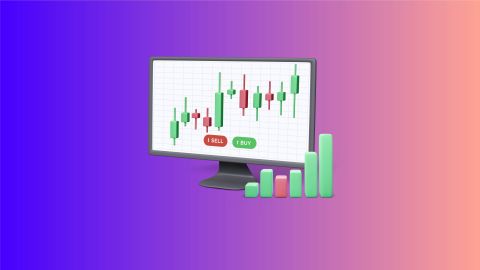Types of capital expenditure
Now that you have seen what CapEx is, let us look at the three types of capital expenditure a company is likely to incur.
- Expansion CapEx
Expansion CapEx refers to the money a company spends to increase its production and revenue-generating capacity. This type of capital expenditure often leads to an increase in earnings and possible cost savings.
- Maintenance CapEx
Maintenance CapEx refers to the expenses a company incurs to maintain, repair, renovate, and improve existing fixed assets. This type of capital expenditure increases the efficiency and longevity of assets.
- Strategic CapEx
Strategic CapEx refers to the money a company spends to enhance its position in the market and make it more competitive. This type of capital expenditure is non-economic in nature and is likely to bear fruits only in the long run.
Examples of capital expenditure
Here are a few examples of capital expenditure to help you understand the concept better.
- Construction of a new manufacturing facility
- Expansion of an existing facility
- Acquisition of tangible and intangible assets in any form
- Investment in research and development (R&D)
- Upgradation of existing technology and infrastructure
Importance of capital expenditure
Investing in capital assets allows companies to enhance efficiency, boost productivity, and strengthen overall performance, paving the way for sustained long-term growth.
Unlike day-to-day expenses, capital expenditures support gradual business growth, acting as long-term investments whose benefits accumulate and compound over time.
Capital expenditure is crucial for a business. Let us look at some of the key factors that make it such an important requirement for a company.
- Investment indicator: CAPEX provides financial analysts with insights into a firm's investment strategies and overall spending patterns.
- Long-term impact: The effects of capital expenditure are primarily felt in the long term. Past CAPEX decisions significantly influence the scale of a firm's manufacturing operations.
- Free cash flow analysis: CAPEX is a crucial component in calculating free cash flow to equity, a metric that assesses a firm's financial health and ability to generate cash for shareholders.
- Irreversibility: Capital expenditures are often irreversible, making it difficult to recoup investments without incurring losses. This is particularly true for customized capital equipment.
- Industry-specific investments: Industries such as manufacturing, telecom, production, oil exploration, and others typically require significant CAPEX due to the need for physical assets.
- Asset value and depreciation: CAPEX increases a firm's asset account, but these assets are subject to depreciation over time, reducing their value
Challenges of capital expenditure
Although CapEx offers plenty of benefits to businesses, it also has a few critical challenges.
Estimating future needs: Anticipating future demand and keeping up with technological advancements can be uncertain and complex.
Budget constraints: Balancing capital expenditures alongside other pressing financial obligations can pose significant challenges.
Measuring Return on Investment (ROI): Assessing the long-term value and impact of capital investments is often difficult and may involve various assumptions.
Financing options: Obtaining adequate funding for major capital projects can be difficult, particularly for small or resource-constrained businesses.
How to calculate net capital expenditure?
Net Capital Expenditure (CapEx) is the net amount invested in fixed assets to maintain or expand a company's operations. It can be calculated using two primary methods: the direct method and the indirect method.
Direct method
The direct method involves explicitly identifying and summing all capital expenditures and subtracting any proceeds from asset sales.
Indirect method
The indirect method utilizes information from the balance sheet and income statement. It assumes that the change in property, plant, and equipment (PP&E) plus depreciation equals net CapEx.
Note: The indirect method is often used when detailed capital expenditure data is not readily available.
Difference between capital expenditure and revenue expenditure
Revenue expenditure is the counterpart to capital expenditure. Here is a table outlining the key differences between these two types of expenses.
Parameter
|
Capital Expenditure
|
Revenue Expenditure
|
Definition
|
Expenditures incurred to acquire or improve capital assets.
|
Expenditures incurred for day-to-day business operations.
|
Duration
|
Long-term
|
Short-term
|
Accounting Treatment
|
Appears on the Balance Sheet under Fixed Assets. Also reflected in the Cash Flow Statement.
|
Appears on the Income Statement.
|
Capacity
|
Improves a firm's earning capacity.
|
Maintains current earnings.
|
Advantage
|
Yields benefits over a substantial period.
|
Benefits limited to the current accounting year.
|
Occurrence
|
Non-recurring
|
Frequent
|
Capitalization
|
Capitalized
|
Not capitalized
|
Depreciation
|
Charged annually
|
Not charged
|
Negative vs Positive Capex
Capital expenditures offer valuable insights into a company’s growth intentions. For investors and analysts, interpreting both negative and positive CapEx figures is essential.
When a company allocates funds toward acquiring or upgrading assets to fuel future growth, it appears as a negative CapEx on the cash flow statement (often termed capital outlays). While this reflects a cash outflow, it typically signals strategic investments in large projects, technological enhancements, or capacity expansion—often viewed as a positive indicator of forward-looking management and business confidence.
Conversely, a positive CapEx figure on the cash flow statement suggests a cash inflow, usually from the sale or divestment of capital assets. While this isn’t inherently bad—such as when outdated machinery is sold—frequent or large-scale divestitures may raise red flags. They might indicate reduced investment in operations, potential growth constraints, or even suggest that management is uncertain about the company’s long-term prospects.
Benefits and risks of CapEx
Here are the primary advantages and potential drawbacks of capital expenditure:
Benefits
Potential for increased profitability
Boosts in efficiency and productivity
Strengthened market competitiveness
Enhanced safety standards and regulatory compliance
Lower long-term operating costs
Greater revenue-generating capacity
Tax advantages through depreciation deductions
Risks
Risk of overspending or investing in non-viable projects
Possibility of technology becoming outdated
Vulnerability to market volatility and economic downturns
Increased debt burden due to large-scale financing requirements
Conclusion
CapEx is critical for the growth and long-term sustainability of a company. Effective capital expenditure will not only increase revenue and profitability but also boost efficiency and cost savings. However, businesses must take care to manage CapEx effectively to fully enjoy the various benefits it has to offer.
Related articles
What is the meaning of authorised capital?
Know About interest on capital gain bonds
What is capital appreciation?
What is capital reduction account?
what is free float market cap?




